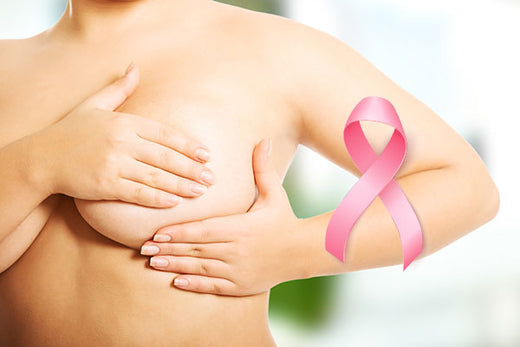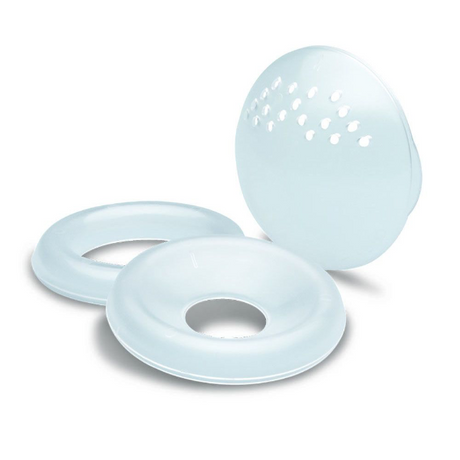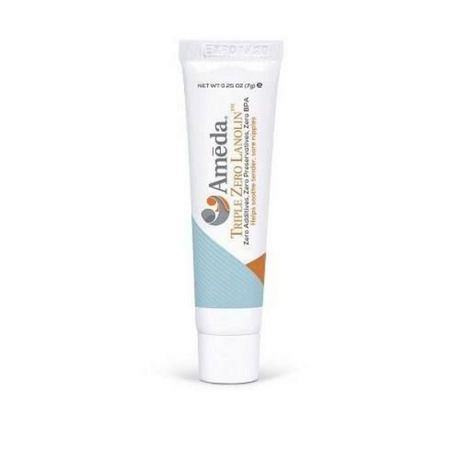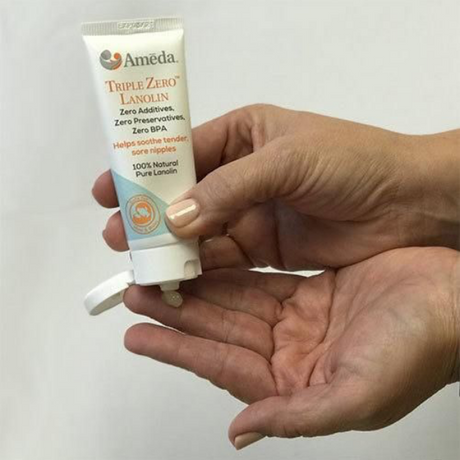Published:
One amazing breastfeeding benefit is that nursing your baby can reduce your risk of developing breast cancer in your lifetime. For the greatest level of protection, aim for at least 12 months of breastfeeding over your lifetime (it’s okay to spread months between different babies), and the more time you can spend nursing, the better.
Breastfeeding isn’t your only tool to avoid breast cancer, though. Following your doctor’s recommendations for breast screening and performing breast self-exams can improve your odds of noticing changes that are worth bringing up at your next doctor’s visit.
Do Breast Self-Exams Work?
In books and movies, a woman with breast cancer often discovers the disease herself by feeling a lump in her breast. In real life, the story is usually much different. Proper breast self-examination technique can take up to 45 minutes per breast. Over the years, research hasn’t been able to establish a link between women performing breast self-exams at home and reduced mortality from breast cancer.
You shouldn’t count on a self-exam to catch cancer. Medical screenings are much more sensitive. What breast self-exams are best for, especially when you’re breastfeeding, is helping you understand what’s normal for your breasts. Pregnancy and breastfeeding cause many changes to your breasts. Taking some time to feel and examine them may help you feel more familiar with new developments, or spot changes that present breastfeeding challenges.

I Found a Lump While Breastfeeding
Breast cancer doesn’t always show up in the form of a lump, and lumps in your breast aren’t always cancer, especially when you’re breastfeeding. In fact, there are various breast cancer signs that overlap with symptoms of more common (and less threatening) breastfeeding ailments. Spend too long researching symptoms online late at night, and anyone could end up panicking.
You should always call your doctor if you’re worried. After all, the doctor may be able to help with many common breastfeeding issues, too! Read over this list for an idea of what that strange sensation in your breast might be telling you:
- Hard, bumpy breast: Could be engorgement. Engorgement, when your breasts are overly full of milk, is most common in the early weeks after your baby’s birth, although it can happen at other times, too. Regular feeding or pumping to drain the milk will relieve the pressure.
- Small, tender, painful lumps or nodules: Could be plugged milk ducts. This common breastfeeding complaint can pop up suddenly. It’s caused by a blockage in a milk duct that traps the milk from flowing. You can try massaging the lump gently during a feeding to help push the blockage along. Nursing often will encourage your body to push milk through the duct and eventually break through the block or plug. Plugged milk ducts usually resolve by themselves in a few days.
- Small lumps or nodules that aren’t painful: Could be fibrocystic breasts. These cysts are typically benign and don’t affect your ability to breastfeed.
- Painful lump with redness or fever: Could be mastitis, a breast infection. If you’ve struggled with persistent engorgement or had mastitis that wasn’t treated promptly, you may also develop an abscess, which is your body’s way of keeping an infection from spreading further. See your doctor for antibiotics, and possibly drainage if you’ve developed an abscess.
- Smooth lump you can move: Could be a cyst. Most cysts are benign. A galactocele, for example, is a cyst made up of a thicker, milky substance (imagine that your breast has churned a little of your milk into cream or butter), and is often naturally reabsorbed into the body during the weaning process. In some cases, or if your cyst is painful, a doctor may advise removing it.
Other Breast Changes to Ask Your Doctor About
Certain signs of some rare forms of breast cancer, like Paget’s disease, can also be similar to much more common breastfeeding issues. These signs can be good reason to get a doctor’s opinion, but don’t stress yourself out: You’re much more likely to have a breastfeeding-related condition than cancer:
- Painful, crusty nipples: Incorrect latching technique can lead to chapped or cracked nipples. Ask an expert to check your latch, if possible, and use nipple cream to moisturize delicate skin after feedings. If cracking is severe, you may need to take a break from nursing for a little while to let your nipple heal.
- Itchy rash: Does breastfeeding literally make you break out in hives? Changing hormones and leaky boobs can make skin conditions like eczema flare up. Do your best to make time for a quick shower with your favorite mild cleanser, use nipple pads to absorb milk, and look for bras or breast shells made of fabric that doesn’t irritate your skin.
- Thicker, itchy skin on your breast or nipples: Eczema again, or another form of atopic dermatitis. If itching is hard to tolerate, ask your doctor which creams are both effective and safe to use while breastfeeding.
- Inverted nipples after breastfeeding: Only about 1 in 10 moms will have inverted nipples, which dimple inward instead of poking out, by the time their baby is born. Even fewer will start breastfeeding with flat or normal nipples and experience a change where nipples get more inverted over time. Constricted milk ducts or scarring after severe nipple cracking can lead to nipple inversion and pain.
How to Perform a Breast Self-Exam

Because breast self-exams can help you spot breastfeeding challenges as much if not more than potentially abnormal lumps, it’s worth checking your breasts out during and after a feeding.
During a feeding, get comfortable and then use your free hand to gently examine your breast. Any tender spots? Is one area warmer than the rest of your skin? If you keep a breastfeeding journal, note anything unusual you spot so you’ll have a record if a lump isn’t going away in a couple days.
After a feeding, grab a towel (milk leaking can make breast exams a little messy) and lie on your back. Use three or four fingers to massage over the whole breast and nipple area, using both straight lines and circular movements.
Remember, a breast self-exam isn’t a replacement for mammograms or other screenings your doctor recommends. The best way to take charge of your breast health is to be open with questions and seek the care you need to stay healthy during and long after breastfeeding.
DISCLAIMER: Ameda strives to present you with accurate and useful breastfeeding information. This article may contain information and ideas that are not necessarily the views of Ameda. It does not constitute medical advice. If you have any questions please contact your healthcare professional.






